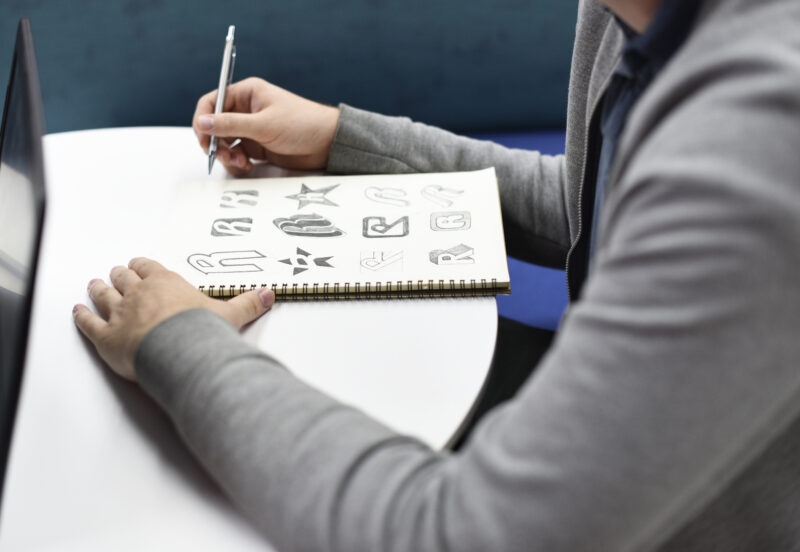In the age of information, designers of logos are tasked with creating something aesthetically pleasing yet also works best with consumers. Designers ask themselves: what is a logo, or a symbol that the majority of humans can understand. Is there a universal language to design in the modern era? In the end, what appears to work in today’s age is something that drives a physiological response, using certain colors and fonts. In fact, according to the Journal of Consumer Research, more people make assumptions of companies based on the shape of their logo, than anything else.
Amanda Brown, the Strategic Communications Manager at the Columbia Area Career Center (CACC) specializes in understanding and distributing promotions for the CACC. When designing a logo that is widely used, it is important for Brown to reflect the center’s purpose to educate and guide students towards possible future careers. Fitting these needs is a challenge both in print and online.
“The most important thing about a logo is what is really difficult, compared to ten years ago, is the social media icon which has made a difference in logo creation, meaning it has to look good on a billboard and a half inch,” Brown said. “You really have to think, ‘What will be interpreted well in both of those spaces?’”
Patrick Sasser, a digital media instructor at the CACC, specializes in the use of logos and the criteria the designers must fulfill in order to work in a variety of spaces and situations. Sasser said a high-quality logo can either make or break a company, given that with social media, companies now can reach millions of people around the world in a matter of seconds.
“We’ve all seen those company logos that are really nice and professional. Just from a logo or design aspect they can draw you in and make you feel like it’s more of a safe or secure company, and that’s just based on a high-quality logo design,” Sasser said. “I like when a logo can have multiple different versions, such as one which is horizontal or vertical or an icon, so it can be represented multiple different ways.”
As observed by Sasser, the versatility of a logo is the primary goal of logo design today. When a student of graphic design, like senior Grace Williams, is honing the skill of logo design, the aim is to supply viewers with a picture of what a business will provide. This can be vary in a depending on cultures.
“When you go to different places and see their logo, if it has fun and bright colors you are drawn into that. You want to go there and experience that certain place,” Williams said. “It just depends on the colors, and the font and the design. I think logos are big because they are the things that draw you in and represent companies and their values.”
When representing a business or organization, there is a certain criteria that brings consumer engagement. Brown believes the primary rule of effective and engaging logo design is that the logo is versatile yet minimal.
“I think that people use a lot more simplicity, but I think they also do a lot more visual allusion,” Brown said. “It may be two dimensional, but they may try to make it three dimensional to just give it a slight visual spin. But because it needs to look good from multiple angles, things need to be more simple.”
Categories:
The little things: How design impacts our daily lives
April 16, 2019
0
More to Discover













































































